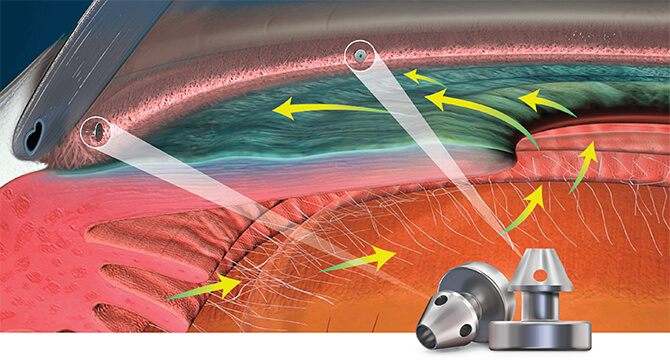Minimally invasive glaucoma surgery
iStent® glaucoma surgery is a minimally invasive procedure that treats open-angle glaucoma, a condition causing increased eye pressure. The surgeon implants a tiny iStent® device into the eye’s drainage system. This improves fluid outflow and lowers intraocular pressure (IOP).
Here’s how the surgery typically works:
Preparation: Before the procedure, your ophthalmologist applies local anesthesia to numb the eye. You may also receive medication to help you relax.
Incision: The surgeon creates a small incision in the cornea, the clear front part of the eye.
iStent® Placement: Using specialized instruments and a microscope, the surgeon inserts one or more iStent® devices into the trabecular meshwork. This drainage structure lies between the iris and the cornea.
Restoration of Flow: The iStent® creates a permanent bypass within the trabecular meshwork. This allows aqueous humor to flow more freely and improves drainage. As a result, IOP lowers.
The FDA approves the iStent® as the smallest device for glaucoma treatment. It creates a new pathway for fluid to bypass the blocked natural drainage system in the eye. By improving fluid outflow, the iStent® helps reduce pressure in the eye, potentially decreasing the need for glaucoma medications.
Surgeons often perform iStent® surgery along with cataract surgery. Both procedures can take place through the same incision. This combined approach is especially helpful for patients with both cataracts and glaucoma.
Like any surgery, iStent® surgery carries potential risks, though rare. These include infection, bleeding, or damage to the eye’s structures. You should discuss these risks and benefits with your ophthalmologist to determine whether iStent® surgery is the right option for you.







